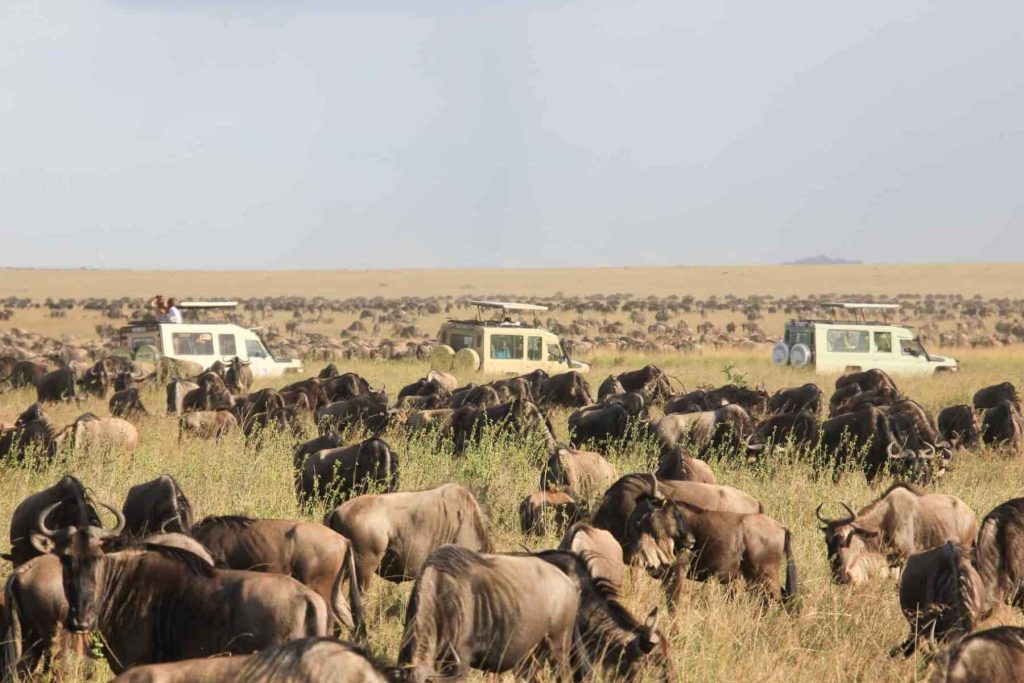Nyerere National Park
DESTINATION DETAILS
About Nyerere National Park
Nyerere National Park stands as a monumental testament to Tanzania’s commitment to conservation and honoring its rich cultural heritage. Sprawling across an impressive 30,893 square kilometers, it emerges as Africa’s largest standalone national park, nestled in the serene embrace of southeastern Tanzania. A mere 230 kilometers from the vibrant city of Dar es Salaam lies the gateway to this pristine wilderness, the Mtemere Gate, beckoning travelers to embark on an unforgettable journey.
Formerly a part of the renowned Selous Game Reserve, Nyerere National Park embodies a new chapter in Tanzania’s conservation narrative. Established in late 2019 by the Tanzania Government and the Tanzania National Parks Authority (TANAPA), this expansive sanctuary is named in homage to Julius Nyerere, the esteemed first President of Tanzania and a stalwart advocate for independence and environmental preservation.
Venturing into Nyerere National Park offers a glimpse into an untamed realm where nature reigns supreme. The park’s relative newness and remote location contribute to a sense of pristine wilderness, where wildlife flourishes in abundance. Here, amidst the vast savannahs and dense woodlands, an impressive array of species roam freely, undisturbed by the hustle and bustle of human activity.
Enthusiastic wildlife enthusiasts will find themselves enraptured by the park’s diverse inhabitants. From the majestic Big Cats—Lions, Leopards, and Cheetahs—to the towering giants of the savannah—Elephants, Rhinos, and Giraffes—Nyerere National Park hosts a symphony of life unlike any other. Additionally, encounters with Buffalo, Zebra, Wildebeest, and a plethora of other species promise to leave visitors awe-inspired and deeply connected to the natural world.
Embarking on a safari within Nyerere National Park offers an unparalleled opportunity to witness the intricate tapestry of predator-prey relationships that unfold in this pristine ecosystem. The meandering Rufiji River, the lifeblood of the park, teems with Hippopotamuses and Crocodiles, offering captivating scenes of wildlife interactions against a backdrop of scenic beauty.
Beyond the thrill of traditional game drives, visitors can partake in a variety of immersive experiences that delve deeper into the cultural and natural heritage of the region. From tranquil river boat safaris, where wildlife sightings abound, to insightful visits to traditional villages, where local customs and traditions come to life, Nyerere National Park offers something for every discerning traveler.
For those seeking moments of tranquility amidst nature’s embrace, guided nature treks, sundowners overlooking the vast expanse of the park, and romantic bush meals under the starlit sky beckon, promising memories to last a lifetime.
Accommodation options within the park cater to every preference, from luxurious tented camps such as Serena Mivumo River Lodge and Sand Rivers to intimate retreats like Beho Beho Camp and Rufiji River Camp. Each offering promises unparalleled comfort and hospitality amidst the untamed beauty of Nyerere National Park.
As stewards of this precious wilderness, the Tanzania National Parks Authority ensures the park’s continued protection and sustainable management, guaranteeing future generations the opportunity to experience the magic of Nyerere National Park in all its splendor. Whether embarking on a thrilling safari adventure or immersing oneself in the rich tapestry of local culture, a journey to Nyerere National Park is an odyssey of discovery, where every moment is infused with wonder and awe.


FAQs
What is unique about Nyerere National Park?
Nyerere National Park, formerly known as Selous Game Reserve, is one of the largest protected areas in Africa and is renowned for its vast wilderness, diverse ecosystems, and abundant wildlife, including large populations of elephants and rare species such as wild dogs.
Which is better Serengeti or Nyerere?
The choice between Serengeti and Nyerere National Park depends on individual preferences. Serengeti is known for its annual wildebeest migration and vast open plains, while Nyerere offers a more remote and off-the-beaten-path safari experience with diverse landscapes and fewer crowds.
What are the Big Five in Nyerere National Park?
The Big Five in Nyerere National Park refers to the lion, elephant, buffalo, leopard, and rhinoceros, which are some of the most sought-after species for wildlife viewing.
How many lions are in Nyerere National Park?
Nyerere National Park is home to a significant population of lions, although specific numbers can vary due to factors such as habitat availability and conservation efforts.
What National Park is the most unique?
Every national park has its own unique characteristics, but Nyerere National Park stands out for its immense size, diverse ecosystems, and the presence of rare and endangered species.
What animals are in Nyerere National Park?
Nyerere National Park is home to a wide variety of wildlife, including elephants, lions, leopards, buffaloes, wild dogs, hippos, crocodiles, and numerous bird species.
How do you get to Nyerere National Park?
Nyerere National Park can be accessed by road from major cities in Tanzania, such as Dar es Salaam and Iringa. Alternatively, charter flights are available to airstrips within the park.
What is the largest National Park in Africa?
Nyerere National Park, formerly known as Selous Game Reserve, is one of the largest national parks in Africa, covering an area of over 50,000 square kilometers.
Why did the government decide to set aside Nyerere National Park from Selous?
The decision to establish Nyerere National Park from Selous Game Reserve was made to enhance conservation efforts and protect the park’s unique biodiversity, including its large elephant populations and critical habitats.
What is a game reserve?
A game reserve is a protected area of land set aside for the conservation of wildlife and habitats, where hunting and other forms of exploitation are restricted or regulated to preserve natural ecosystems.
Which Tanzanian Park is famous for its spectacular wildlife migrations?
The Serengeti National Park in Tanzania is famous for its spectacular wildebeest migration, one of the most impressive wildlife spectacles in the world.
What is the significance of Nature Park?
Nature parks, such as Nyerere National Park, play a crucial role in conserving biodiversity, protecting ecosystems, and promoting sustainable tourism, contributing to the preservation of natural heritage for future generations.
What are the game reserves in Tanzania?
Tanzania is home to several game reserves, including Nyerere National Park (formerly Selous Game Reserve), Serengeti National Park, Tarangire National Park, and Ruaha National Park, among others.
What is something unique or interesting about the National Park of Greenland?
The National Park of Greenland is one of the largest national parks in the world, covering an area of over 375,000 square kilometers and encompassing diverse landscapes, including glaciers, fjords, and Arctic tundra.
Why is Big Ben a National Park?
Big Ben, a famous clock tower in London, is not a national park. It is a cultural landmark and a UNESCO World Heritage Site, known for its iconic clock and bell.
Can you see the Big 5 in Tanzania?
Yes, Tanzania is one of the best places in Africa to see the Big Five (lion, elephant, buffalo, leopard, and rhinoceros) in their natural habitat, with several national parks and game reserves offering excellent wildlife viewing opportunities.
